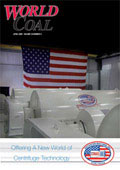Editorial comment
Climate change is accelerating. Its impacts are already being felt within US borders, from unusually prolonged Midwest droughts to a plague of bark beetles destroying Pacific pine forests.
Register for free »
Get started now for absolutely FREE, no credit card required.
Climate change is accelerating. Its impacts are already being felt within US borders, from unusually prolonged Midwest droughts to a plague of bark beetles destroying Pacific pine forests.
Congress is poised to respond by implementing cap-and-trade legislation to curb greenhouse gas emissions from fossil fuels. (Although some people advocate a carbon tax rather than cap-and-trade, this approach would penalise coal-producing states and would never make it to the president’s desk.) Every climate bill currently before Congress includes a cap-and-trade programme as the centerpiece. Additionally, the principle of capping US fossil fuel emissions is well established. For example, seven Midwestern states - despite their heavy dependence on coal - have signed the Midwestern Regional Greenhouse Gas Accord, which plans to introduce a regional cap-and-trade programme in early 2012.
A second reality, however, is that coal, a carbon-heavy fossil fuel, provides 50% of US energy needs. However fast we deploy technologies and programmes for renewable energy and energy efficiency, coal will continue to power a sizable proportion of US industry, commerce and homes for several decades to come.
So, to be effective, cap-and-trade must be complemented by efforts to reduce coal consumption and/or negate its greenhouse gas effect. The latter goal can be achieved through CCS, a fast-developing technology for which global research and development has been underway for more than a decade.
In the US, a regional partnership programme has successfully completed 20 research projects injecting CO2 underground into a variety of geological formations. This has provided a good picture of how CCS could work safely and effectively. But questions remain that can only be answered with industry-scale demonstration projects. Without these, we can’t proceed to commercial CCS deployment, which, unfortunately, does not come cheap, costing US$ 1 billion to US$ 1.5 billion per project.
So how do we find the funds to enable widespread deployment of CCS technology to help meet President Obama’s target of reducing greenhouse gas emissions 80% by 2050?
The US$ 3.6 billion allocated for CCS in the American Recovery and Reinvestment Act of 2009 is a good start, but falls short of what will be needed to commercialise the technology. A federal cap-andtrade programme can bridge this funding gap, providing a platform to fund CCS demonstrations, while guaranteeing steady emissions reductions, encouraging innovation and ensuring a measure of fairness to low-income consumers and coal-dependent regions.
A model for such an approach already exists. The EU recently finalised a plan to fund CCS demonstrations from the proceeds of its emissions trading scheme. The Emission Trading Directive of December 2008 requires member states to use at least 50% of revenues raised from auctioning pollution allowances to finance action against climate change, including CCS efforts. In addition, up to 300 million allowances from a reserve fund will be used to build up to 12 commercial demonstration CCS projects.
A US version of this legislation, combined with the recent stimulus funding, could set the US on the path to significantly reducing its coal-related emissions within the next 20 years.

